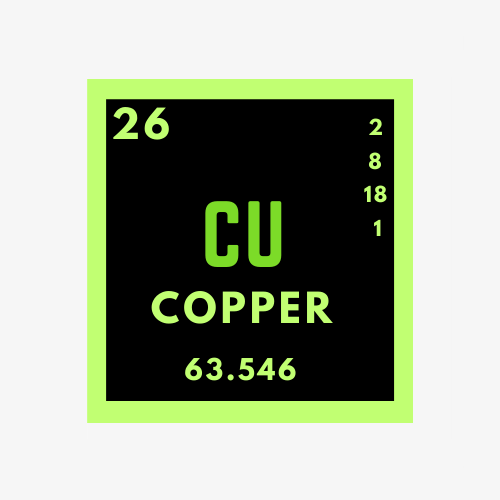What is Copper Molar Mass?
Table of Contents

Copper Molar Mass is the mass of one mole of Copper atoms. It is a physical property of Copper and is represented by the symbol “M“. The molar mass of Copper is determined by adding up the atomic mass of each element in one Copper atom. The atomic mass of Copper is 63.55 g/mol.
Calculating Copper Molar Mass
To calculate Copper Molar Mass, we need to know the atomic mass of Copper, which is 63.55 g/mol. The molar mass of Copper can be calculated by multiplying the atomic mass of Copper by the Avogadro’s number, which is 6.02 x 10^23.
Therefore, Copper Molar Mass can be calculated as follows:
Copper Molar Mass = Atomic Mass of Copper x Avogadro’s Number Copper Molar Mass = 63.55 g/mol x 6.02 x 10^23 Copper Molar Mass = 3.81 x 10^25 g/mol
Applications of Copper Molar Mass
Copper Molar Mass is an essential property of Copper that has numerous applications in various industries. It is used to determine the mass of Copper needed to produce a specific number of Copper atoms or molecules. It is also used in the production of Copper alloys, which are used in electrical wiring, plumbing, and construction.
. Copper Molar Mass is also used in the field of Chemistry to calculate the concentration of Copper ions in a solution. This is done by calculating the amount of Copper ions in a given volume of solution and converting it to moles using the molar mass of Copper.
Conclusion
In conclusion, Copper Molar Mass is an essential property of Copper that is used in various applications, including the production of Copper alloys and the calculation of the concentration of Copper ions in a solution. Understanding the concept of Copper Molar Mass is crucial for students, scientists, and professionals in various industries.
📗 Content
⚫ Organic Chemistry: 5 Effective Methods of Purifying Compounds for Class 10-12 Students
- CBSE sample paper
- A 5% solution (by mass) of cane-sugar (M.W. 342) is isotonic with 0.877% solution of substance X. Find the molecular weight of X.
- Mastering chemistry
- Differences between Lanthanoids and Actinoids
- CBSE Class 12th chemistry questions paper
